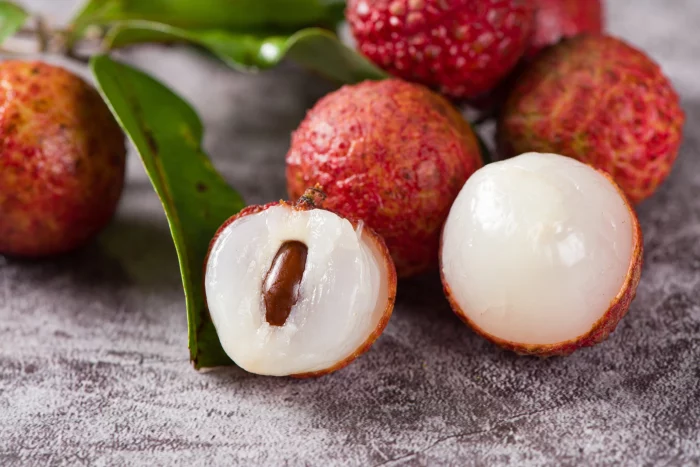For individuals with diabetes, finding suitable dessert options can be a challenge. The good news is that having diabetes doesn’t mean you have to give up on delicious and satisfying desserts. With careful consideration of ingredients and portion sizes, it’s possible to enjoy sweet treats while managing blood sugar levels effectively. In this article, we will explore a variety of diabetes-friendly dessert options that can satisfy your cravings without compromising your health.
Understanding Diabetes and Dessert Choices
Diabetes is a condition characterized by high blood sugar levels. Managing blood sugar levels is crucial to prevent complications and maintain overall health. When it comes to desserts, it’s important to consider the impact of carbohydrates and sugars on blood glucose levels. Carbohydrates are the main macronutrient that affects blood sugar, so it’s essential to monitor portion sizes and choose desserts that are lower in carbs and sugars.
Diabetes-Friendly Dessert Substitutions and Tips
To create diabetes-friendly desserts, consider the following substitutions and tips:
Use Natural Sweeteners: Opt for natural sweeteners like stevia, erythritol, or monk fruit extract, which have minimal impact on blood sugar levels. Use them in moderation to sweeten desserts without the added carbs and sugars.
Choose Whole Grains: Replace refined grains with whole grains to increase the fiber content of desserts. Whole grains have a lower glycemic index and can help regulate blood sugar levels. Consider using whole wheat flour, oats, or almond flour in your dessert recipes.
Incorporate Healthy Fats: Including healthy fats in desserts can help slow down the absorption of sugars and promote satiety. Use ingredients like nuts, seeds, avocados, or coconut oil to add healthy fats to your dessert recipes.
Portion Control: Pay attention to portion sizes to ensure you’re not overindulging in desserts. Even diabetes-friendly desserts should be consumed in moderation to avoid blood sugar spikes.
Balance with Protein and Fiber: Including protein and fiber-rich ingredients in desserts can help slow down the digestion and absorption of carbohydrates, which can help regulate blood sugar levels. Consider using ingredients like Greek yogurt, chia seeds, or legumes to increase protein and fiber content.
Experiment with Spices: Spices like cinnamon, nutmeg, or ginger can add natural sweetness and depth of flavor to desserts without the need for excessive sugar. They may also have potential blood sugar-regulating properties.
Monitor Blood Sugar: It’s important to monitor your blood sugar levels after consuming desserts to understand how your body responds. Each individual may have different tolerances, so it’s essential to find what works best for you.
Diabetes-Friendly Dessert Ideas
Now that we’ve covered some general tips, let’s explore diabetes-friendly dessert options that can satisfy your sweet tooth without causing significant spikes in blood sugar levels.
1. Fruit Salad with Greek Yogurt
Create a refreshing dessert by combining a variety of fresh fruits like berries, melons, and citrus fruits. Top it off with a dollop of Greek yogurt for added creaminess and protein. Greek yogurt is lower in carbs and higher in protein compared to regular yogurt, making it a diabetes-friendly choice.
2. Sugar-Free Jello
Sugar-free gelatin or Jello is a low-calorie, low-carb dessert option. It provides a sweet and refreshing treat without raising blood sugar levels. You can customize your Jello by adding fresh fruit slices or a dollop of sugar-free whipped topping.
3. Baked Apples with Cinnamon
Slice an apple and sprinkle it with cinnamon. Bake until the apples are tender and juicy. Cinnamon adds natural sweetness and may have potential benefits in regulating blood sugar levels. Serve the baked apples with a small scoop of sugar-free or low-sugar vanilla ice cream or a dollop of Greek yogurt.
4. Chia Seed Pudding
Chia seed pudding is a nutritious and versatile dessert. Mix chia seeds with your choice of milk (dairy or plant-based), a natural sweetener like stevia or erythritol, and flavorings such as vanilla extract or cocoa powder. Let the mixture sit in the refrigerator for a few hours or overnight until it thickens into a pudding-like consistency. Top with fresh berries or a sprinkle of chopped nuts for added texture.
5. Dark Chocolate
Choose high-quality dark chocolate with a cocoa content of at least 70% or higher. Dark chocolate contains less sugar compared to milk chocolate and is rich in antioxidants. Enjoy a small piece or two to satisfy your chocolate cravings.
6. Homemade Smoothies
Create your own diabetes-friendly smoothies by blending a combination of low-sugar fruits like berries or cherries with a source of protein like Greek yogurt or protein powder. You can also add leafy greens like spinach or kale for an extra nutrient boost.
7. Coconut Flour or Almond Flour Desserts
Replace refined wheat flour with coconut flour or almond flour in your baking recipes. These flours are lower in carbs and higher in fiber and healthy fats. Explore recipes for cookies, muffins, or cakes that use these alternative flours for a diabetes-friendly twist.
8. Nut Butter and Apple Slices
Spread a tablespoon of your favorite nut butter, such as almond butter or peanut butter, onto apple slices. This combination provides a satisfying mix of healthy fats, fiber, and natural sweetness.
9. Yogurt Parfait
Layer Greek yogurt, berries, and a sprinkle of granola or chopped nuts in a glass to create a nutritious and delicious parfait. Greek yogurt provides protein and the berries add natural sweetness and antioxidants.
10. Frozen Banana “Ice Cream”
Slice a ripe banana and freeze the slices. Once frozen, blend the banana slices in a food processor until they reach a creamy consistency resembling ice cream. You can add flavorings like cocoa powder, vanilla extract, or a spoonful of peanut butter for added taste. This simple and naturally sweet dessert can be enjoyed on its own or topped with nuts or dark chocolate shavings.
Remember, while these dessert options are considered diabetes-friendly, moderation is key. Pay attention to portion sizes, monitor your blood sugar levels, and incorporate these treats as part of a well-balanced and controlled diet.
Consult a Healthcare Professional
It’s important to consult with a healthcare professional, such as a registered dietitian or nutritionist, who can provide personalized advice tailored to your individual needs and health status. They can help you create a diabetes management plan that includes appropriate dessert choices while considering your specific dietary requirements and blood sugar control.
Conclusion
Having diabetes doesn’t mean you have to completely forgo sweet treats. By making thoughtful ingredient substitutions, practicing portion control, and balancing your dessert choices with a well-rounded diet, you can satisfy your sweet tooth while effectively managing blood sugar levels. Explore the wide range of diabetes-friendly dessert options available and consult with a healthcare professional to ensure your choices align with your specific dietary needs. With careful planning and moderation, you can enjoy delicious desserts without compromising your health.






















